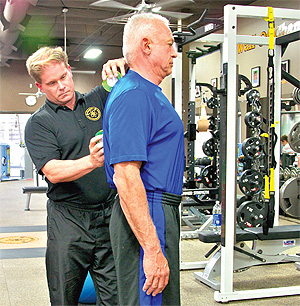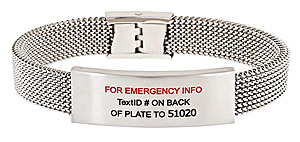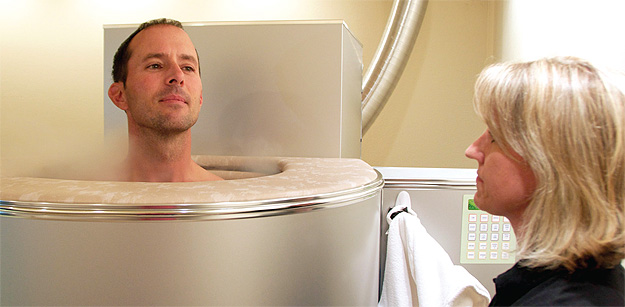
Not So Fast
Questions For Emergency Room Doctors
Emergency room visits that are not immediately life-threatening nevertheless are scary and probably don’t represent the types of situations in which you make your best decisions, says Dr. Bruce Foster, an emergency room physician in Maryland who served 25 years as chief of emergency medicine at a Pennsylvania hospital. Foster recommends patients ask four questions that could save them time and money and spare them avoidable complications.
1 — Is this antibiotic necessary?
The Centers for Disease Control and Prevention has identified antibiotic overuse as a major public health problem in the United States. Viruses cause a great majority of upper respiratory illnesses. Antibiotics kill only bacteria, so they are not helpful for most of those illnesses.
2 — Is this CT scan necessary?
CT scans emit a lot of radiation and are expensive. Research published in the Archives of Internal Medicine estimated that about 2 percent of future cancers will result from CT radiation. Some researchers have estimated that as many as one-third of CT scans performed in the United States may be medically unnecessary. In cases like minor head trauma or mild abdominal pain, a doctor’s clinical judgment supplemented by close observation may suffice.
3 — Will this test change how you would treat my illness?
If a test will not alter the treatment prescribed, then its value is questionable. For example, a doctor may order an MRI for a patient with acute low-back pain. Even if it proves the patient has a herniated disc requiring surgery, they would likely be treated conservatively initially with antiinfl ammatory drugs and pain medication, because more than 90 percent of patients with acute low-back pain get better with no additional intervention.
4 — What is the probability that this illness or injury will have a bad outcome?
If your child falls off the jungle gym and hits his head, you and your doctor will balance the risks of radiation from a CT scan against the probability of bleeding into his brain that a scan could detect. You can arrive at a decision with which you are comfortable only through open discussion with your doctor.
Testing, Testing
 You may think any piece of gym equipment will build the body you want. You may consider a one-size-fits-all approach to nutrition good enough. But Kinetix Health & Performance Center in Palm Desert suggests individuals must understand where they need to concentrate their efforts before beginning an exercise, training, or diet regimen. Co-owner Michael Butler, who holds certifications in physical fitness/athletic training and sports nutrition, starts members on a program with a posture and fitness assessment. Personal training sessions begin with an evaluation that includes medical history and fitness screening. Strength and conditioning assessments measure posture, gait, and range of motion. Nutrition coaching begins with metabolic typing to determine if a client is protein dominant, carbohydrate dominant, or a mix of both. A golf-specific conditioning program begins with an evaluation by a certified golf biomechanic specialist. Once you know your current profile, you can follow a personal path to a better you.
You may think any piece of gym equipment will build the body you want. You may consider a one-size-fits-all approach to nutrition good enough. But Kinetix Health & Performance Center in Palm Desert suggests individuals must understand where they need to concentrate their efforts before beginning an exercise, training, or diet regimen. Co-owner Michael Butler, who holds certifications in physical fitness/athletic training and sports nutrition, starts members on a program with a posture and fitness assessment. Personal training sessions begin with an evaluation that includes medical history and fitness screening. Strength and conditioning assessments measure posture, gait, and range of motion. Nutrition coaching begins with metabolic typing to determine if a client is protein dominant, carbohydrate dominant, or a mix of both. A golf-specific conditioning program begins with an evaluation by a certified golf biomechanic specialist. Once you know your current profile, you can follow a personal path to a better you.
Running for Their Lives
Mid-lifers, rejoice!, Finally, someone appreciates you. According to Williams-Helde Marketing Communications, the likelihood of being what they call Active Healthy Lifestyles individuals peaks around the ages 45 to 54. The Seattle-based firm issued a report (www.william-helde.com/ ahl/) recommending companies target these “superinfluential” consumers, who number more than 77 million Americans. According to Williams-Helde, 64 percent of adults 45-54 are AHLs (“They’re the ‘up at 5:30 a.m., run five miles and cook breakfast before you’ve even hit your first snooze’ Americans”).
“While young people are more active, they are less likely to eat healthy, a trend that reverses with age,” the report says. “We also see that increased education and income brings an increase in active, healthy living.”
Furthermore, the active, healthy lifestyle crosses all areas of AHLs’ lives. They are 261 percent more likely to attend a musical performance, 195 percent more likely to entertain at home, and 153 percent more likely to participate in a club or organization. They actively gather information before making decisions, take full responsibility for their experiences, and socialize to stay balanced and happy.
Maybe it’s time to put the old “midlife crisis” cliché to bed. The majority of midlifers are too busy for such nonsense.
Wear It Well
Bracelets Do More Than Adorn Your Wrist
The Jawbone UP Wristband, used with its free app for iPhone or iPad, allows you to track your steps, distance, calories burned, pace, intensity level, active vs. inactive time, and more. You can set it to vibrate to remind you to get up and move when you’re sitting at a computer, watching television, or are otherwise inactive. Set it to track your sleep patterns and awaken you at the ideal moment in your natural sleep cycle just before your desired wake-up time. Track your meals and how you feel afterward to help you discover which foods make you feel your best. The app even allows you to join a challenge and compete with others. The wristband — a spring steel frame encased in rubber — costs $99.99. www.jawbone.com
 The TextID Bracelet goes a step beyond typical medical bracelets that alert first responders to health conditions that may affect treatment. With TextID, you register a PIN and create a profile that includes information on medical conditions and prescriptions you take, as well as up to 10 emergency contacts. In an emergency, a first responder can text your PIN (printed on the inside of the bracelet) to the number on the outside of the bracelet and within seconds receive potentially lifesaving information and the names and numbers of your family doctor, family members, or anyone else you want contacted in an emergency. You can update your profile at any time from any computer or smart phone. TextID is available in a variety of bracelet styles. Membership is $12 the first year and $10 each year thereafter. www.hopepaige.com
The TextID Bracelet goes a step beyond typical medical bracelets that alert first responders to health conditions that may affect treatment. With TextID, you register a PIN and create a profile that includes information on medical conditions and prescriptions you take, as well as up to 10 emergency contacts. In an emergency, a first responder can text your PIN (printed on the inside of the bracelet) to the number on the outside of the bracelet and within seconds receive potentially lifesaving information and the names and numbers of your family doctor, family members, or anyone else you want contacted in an emergency. You can update your profile at any time from any computer or smart phone. TextID is available in a variety of bracelet styles. Membership is $12 the first year and $10 each year thereafter. www.hopepaige.com
While the first two bracelets rely on 20th century technology, the Count Me Healthy Bracelet technology dates back — about 5,000 years — to the abacus. Wearers simply slide sterling silver beads (also available dipped in 14K yellow gold or 18K rose gold) along a cuff bracelet to track glasses of water drunk, hours between eating or smoking, fruit and vegetable servings, distances covered, or other personal benchmarks of achievement (or even to monitor positive thoughts, prescriptions, etc.). The beads hug the cuff so they won’t bunch up, but they will slide so they can be moved across a small bump in the center of the cuff (the “counter”). Need to count higher than 12? The bracelets also come in stacked sets of three. Prices range from $88 to $483. www.countmehealthyjewelry.com
Wired World Of Wellness
Pete Ellis, who, with his wife Susie Ellis, owns a residence in Indian Wells, launched a business incubator in March to fund companies that use technology to create health and wellness solutions for consumers. Headquartered in New York, WellTech (www.welltechfunding.com) provides startups with a minimum of $50,000 in capital, office space in New York, mentoring, and marketing support. Initial participants include the following:
• FITiST (www.fi tist.com) serves as a membership booking website for gyms and spas (beta operations are in Los Angeles and New York City) and offers curated wellness and fitness plans.
• Wizpert (www.wizpert.com) offers an iPhone app that connects advice seekers with qualified experts for real-time conversations on topics ranging from nutrition and exercise to cooking and parenting.
In 2001, the Ellises founded SpaFinder, a global spa and wellness media company that has grown to encompass partnerships with more than 12,000 spa and wellness businesses worldwide.
Chill Out
But It's A Dry Cold

Susan Butler supervises a cryotherapy treatment for PGA Tour golfer Mike Weir. Weir stepped into the Cryo-Sauna 15 times this past winter to aid his recovery from elbow surgery.
Kinetix Health & Performance Center
The desert may be the place people come to escape frigid temperatures that strike other parts of the country, but some folks are voluntarily putting themselves into an icebox for up to three minutes. That is, they’re stepping into the desert’s only Cryo-Sauna at Kinetix Health & Performance Center in Palm Desert, where co-owner Susan Butler is certified to operate the chamber that surrounds the body with -238 degrees Fahrenheit air.
The process (used by professional athletes at Nike, the Dallas Mavericks, San Antonio Spurs, and others) works by triggering the release of endorphins and adrenaline into the blood stream, enabling white blood cells to heal soreness and muscle injuries and relieve the pain of rheumatoid arthritis. Because the sauna uses gas nitrogen, it’s a “dry” cold, so it’s not as uncomfortable as going out in a winter storm in, say, Minnesota. How cool is that?
Cool Heads Prevail
While Dr. Oz recommends wearing socks to bed to help you sleep, researchers at the University of Pittsburgh School of Medicine suggest treating the part of your body farthest from your toes with an opposing technique: keeping your head cool. In a study of patients with insomnia, three-quarters of the participants benefited from wearing a cap with cool water flowing through it. The cap is not yet on the market, but you can get the effect by tossing a gel ice pack on your pillow.